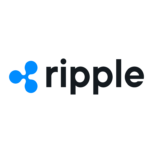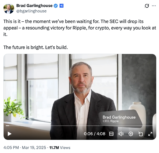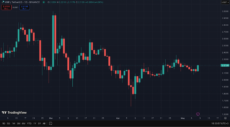Super Pepe (SUPEPE) is a 2025 meme coin with a charitable twist. In this post, you will discover some realistic price scenarios, a...
Ripple uses XRP and blockchain to modernize global payments, helping banks and businesses move money faster and cheaper, even amid legal challenges.
Key Notes:
- Ripple is transforming cross-border finance with blockchain-based payment solutions, using XRP to enable fast, low-cost, real-time global transactions.
- XRP’s integration into Ripple’s On-Demand Liquidity (ODL) system gives it practical utility beyond speculation, attracting banks and remittance providers worldwide.
- With legal challenges resolved and international adoption rising, Ripple is well-positioned to shape the future of digital finance as regulatory clarity improves.
Ripple has emerged as one of the most influential players in blockchain-based finance, offering a practical alternative to outdated cross-border payment systems. Unlike many cryptocurrencies driven by speculation, Ripple focuses on solving real-world challenges faced by banks and financial institutions, with XRP playing a central role in its technological ecosystem.
This article explores Ripple and XRP’s origins, functionality, legal status, prospects, and why they remain key to the conversation about the next generation of global payments.
Introduction to Ripple and XRP Digital Currency
Ripple and XRP are often mentioned together, but serve distinct roles within the digital asset ecosystem. Ripple is a fintech company that aims to modernize global payments by offering fast, low-cost cross-border transaction solutions for financial institutions. XRP, on the other hand, is the native cryptocurrency of the XRP Ledger — an open-source, decentralized blockchain specifically designed for speed and scalability.
Originally launched in 2012, XRP was created to facilitate real-time value transfers and serve as a bridge currency between different fiat currencies. Unlike Bitcoin or Ethereum, which rely on Proof-of-Work, the XRP Ledger uses a consensus algorithm that allows it to process transactions in seconds with minimal fees. This makes it highly attractive for banks, payment providers, and remittance services looking to significantly improve settlement times and reduce costs.

Ripple Logo. Photo: Ripple Official Website.
As Ripple continues expanding its partnerships with major financial institutions, XRP plays a critical role in powering the company’s On-Demand Liquidity solution, enabling instant cross-border payments without the need for pre-funded accounts.
The Origins of Ripple Labs and XRP Cryptocurrency
The origins of Ripple Labs Inc. and the XRP currency trace back to the early 2010s, when developers aimed to create a faster, more energy-efficient alternative to Bitcoin. In 2012, Ripple Labs (initially founded as OpenCoin) was established by Chris Larsen and Jed McCaleb, who created XRP to transform global payments by leveraging distributed ledger technology. Unlike Bitcoin, which relies on significant computing power and was designed for peer-to-peer transfers, Ripple targeted leading banks, institutional investors, and financial institutions to enhance the efficiency of cross-border transactions.
Central to Ripple’s mission was the XRP Ledger — an open-source, decentralized blockchain network designed to validate transactions quickly and at minimal cost. XRP, the native crypto asset of this ledger, was not mined but pre-mined, with 100 billion units created at inception. Ripple Labs Inc. retained a large allocation to fund business development, incentivize partnerships, and provide liquidity to the ecosystem. At the same time, the remaining XRP was distributed among early investors and participants from different countries.
From the beginning, Ripple positioned XRP as a store of value and a digital asset designed to provide crypto liquidity, bridge different currencies, and support instant conversion in cross-border transfers. This focus on practical use cases helped Ripple gain traction with businesses and institutional investors worldwide, setting XRP apart from other cryptocurrency initiatives and laying the groundwork for key partnerships, even as the company navigated complex investor protection laws.
How Ripple Works: The Ripple Network and XRP Ledger
Ripple functions through a dual-layered system comprising the RippleNet payment network and the XRP Ledger blockchain. RippleNet, developed by Ripple Labs Inc., is a centralized infrastructure that connects leading banks, payment providers, and other financial institutions, enabling them to send money across borders in real time with significantly reduced costs. This network is a modern alternative to the outdated SWIFT system by enabling settlements in seconds rather than days — a key advantage for global investors and businesses.
The XRP Ledger, which underpins Ripple’s architecture, is a decentralized blockchain that uses a unique consensus protocol to validate transactions. Instead of relying on energy-intensive mining systems like Bitcoin, XRP’s consensus model employs trusted validators — including nodes in different countries — to efficiently process up to 1,500 transactions per second with near-zero fees. This efficiency appeals to institutional investors looking to invest in scalable blockchain solutions.
XRP — the digital asset created by Ripple — plays a pivotal role in RippleNet’s On-Demand Liquidity service. It bridges different fiat currencies without needing pre-funded accounts, helping financial institutions invest capital more strategically while improving transaction speed and liquidity across borders. These capabilities are especially attractive to businesses dealing in multiple currencies and needing rapid settlement in dollars or other major units of money.
With Brad Garlinghouse as its chief executive officer, Ripple continues to advocate for regulatory clarity. This is especially true as the company has faced scrutiny for allegedly violating investor protection laws in the U.S., even as Ripple received approval to operate in other jurisdictions. Despite these legal challenges, Ripple’s combined infrastructure of RippleNet and the XRP Ledger remains one of the most advanced offerings in the crypto space, trusted by a growing segment of the cryptocurrency community.
Ripple’s Use Cases and Adoption by Financial Institutions
Ripple has positioned itself as a leader in blockchain-based payment solutions, with real-world use cases that extend far beyond speculation. Its primary offering, RippleNet, enables financial institutions to settle cross-border transactions in real time, with reduced costs and increased transparency. This system replaces outdated infrastructure like SWIFT by providing instant settlement, end-to-end tracking, and better liquidity management.
One of Ripple’s most prominent solutions is On-Demand Liquidity, which uses XRP as a bridge currency to eliminate the need for pre-funded accounts in destination currencies. This not only reduces capital requirements but also improves cash flow for banks and remittance providers. ODL is currently used in the Philippines, Mexico, and Brazil, with growing interest from institutions in emerging markets.
Major players, including Santander, SBI Remit, Tranglo, and Pyypl have adopted Ripple’s technology. These partnerships reflect a broader shift toward blockchain-powered settlement systems that are faster, more secure, and more scalable than legacy methods. Ripple’s enterprise-grade solutions will likely see further integration across traditional and digital financial sectors as regulatory clarity improves.
Regulatory Challenges and Legal Status of XRP
XRP has been central to one of the most high-profile regulatory battles in the crypto industry. In December 2020, the U.S. Securities and Exchange Commission (SEC) filed a lawsuit against Ripple Labs, alleging that the company had conducted an unregistered securities offering by selling XRP. This legal dispute sparked widespread uncertainty about whether XRP’s classification should be treated as a security or a digital currency.
The case had significant implications for Ripple and the broader cryptocurrency market, especially regarding how regulators interpret and enforce securities laws in the blockchain space. In July 2023, a U.S. district court issued a partial ruling stating that XRP sales on public exchanges did not constitute securities transactions, offering a major legal win for Ripple.
In August 2024, a U.S. court significantly reduced the penalty imposed on Ripple Labs in its long-running legal battle with the SEC. Originally seeking $2 billion in fines, the SEC ultimately settled for a $125 million civil penalty after the court rejected most of the regulator’s claims, including those related to institutional XRP sales. This marked a turning point in the case, signaling a shift toward a more measured approach in crypto enforcement.
However, the case took a decisive turn in March 2025, when the SEC, under its new chairman, Paul Atkins, who succeeded Gary Gensler, dropped all remaining claims against Ripple and officially closed its investigation.

Ripple CEO Brad Garlinghouse announced the closure of the SEC investigation. Photo: X.
Despite the prolonged legal battle, Ripple has continued to grow its global footprint, especially in jurisdictions with more defined regulatory frameworks such as the EU, UAE, and Southeast Asia. The resolution of the SEC case marks a pivotal moment for U.S. crypto regulation and sets an important precedent for how blockchain projects approach compliance in shifting legal environments.
The Future of Ripple and Native Token XRP in the Cryptocurrency Market
The future of Ripple and XRP is closely tied to the evolving landscape of global finance and digital asset regulation. As blockchain adoption accelerates, Ripple is well-positioned to serve as a bridge between traditional financial institutions and next-generation payment infrastructure.
Its focus on real-world utility, particularly through On-Demand Liquidity and partnerships with banks and remittance providers, gives XRP a distinct role among crypto assets, often driven by speculation.
Currently, XRP trades at a market price of XRP $2.04 24h volatility: 1.0% Market cap: $122.93 B Vol. 24h: $2.95 B .

XRP Price Chart. Photo: TradingView.
Regulatory clarity, especially in the United States, will be pivotal in shaping Ripple’s growth trajectory. A favorable resolution to the legal battle with the SEC could unlock new opportunities for institutional adoption and XRP integration into mainstream financial services. Meanwhile, Ripple continues to expand in markets with supportive regulatory frameworks, reinforcing its presence across Asia, the Middle East, and Latin America.
As demand for faster, cheaper, and more transparent cross-border payments increases, Ripple’s enterprise-grade solutions and the XRP Ledger’s high performance may prove essential to the next phase of digital finance. While challenges remain, Ripple’s strategic positioning and growing ecosystem suggest it will remain a major player in the global crypto market.
Disclaimer: This article is for informational purposes only and does not provide financial, trading, or investment advice. Cryptocurrency prices can fluctuate wildly, so always do your own research (DYOR), assess risks, and consult a professional before making financial decisions. The author and team are not responsible for any losses from using this information.
FAQ
What is Ripple, and how does it differ from XRP?
Ripple is a fintech company that develops payment solutions for financial institutions. XRP is the native digital asset used on the XRP Ledger, an open-source blockchain designed for fast and low-cost transactions.
How does the Ripple network facilitate international transactions?
RippleNet connects banks and payment providers, enabling real-time settlement and currency conversion using XRP as a bridge asset and eliminating the need for pre-funded accounts.
What is the role of XRP tokens in the Ripple ecosystem?
XRP is a liquidity tool in Ripple’s On-Demand Liquidity (ODL) service, helping institutions instantly transfer value between different fiat currencies.
Enter the answer in F.A.Q
How does Ripple's consensus mechanism work compared to traditional blockchain?
Unlike proof-of-work systems, the XRP Ledger uses a consensus protocol among trusted validators, allowing faster, energy-efficient transaction validation without mining.
What are the benefits of using Ripple for cross-border payments?
Ripple offers near-instant settlement, low transaction fees, improved transparency, and reduced reliance on intermediaries, making it more efficient than traditional systems.
Which major financial institutions have adopted Ripple's technology?
Institutions like Santander, SBI Remit, Tranglo, and Pyypl have integrated Ripple’s solutions to enhance cross-border payment efficiency.
What legal challenges has Ripple faced regarding XRP?
Ripple has been in a legal battle with the U.S. SEC since 2020. The SEC claims that XRP was sold as an unregistered security, a case that remains partially unresolved.
How does Ripple's technology compare to the SWIFT system?
Ripple provides real-time settlement and end-to-end tracking, unlike SWIFT, which can take days and lacks transparency in transaction routing.
What is the current regulatory status of XRP?
As of mid-2023, a U.S. court ruled that XRP is not a security when sold on public exchanges, but regulatory uncertainty still exists, especially regarding institutional sales.
What is the future outlook for Ripple and XRP in the cryptocurrency market?
With growing international adoption and a focus on utility, Ripple and XRP are well-positioned to play a major role in the future of blockchain-based financial infrastructure, pending regulatory clarity.
Coinspeaker in Numbers
Monthly Users
Articles & Guides
Research Hours
Authors
AlphaPepe has quickly become one of the more talked-about meme presales, thanks to the instant token delivery, active community, a...
In this guide, we explain how to purchase MoonBull tokens through the presale, explore the project's meme-meets-DeFi mechanics.
 9 mins
9 mins
Tony Frank
Crypto Editor, 53 postsTony Frank is an accomplished cryptocurrency analyst, author, and educator whose work bridges the gap between complex blockchain technology and accessible, actionable insights for global audiences. Over the past decade, he has emerged as a respected voice in the rapidly evolving world of digital assets, combining technical expertise with a talent for storytelling to help readers navigate everything from Bitcoin’s monetary philosophy to the intricacies of decentralized finance (DeFi). Tony earned his Bachelor’s degree in Economics and Finance from the University of Melbourne, where he developed a deep interest in monetary systems and market structures. He later pursued a Master’s degree in Blockchain and Digital Currency from the University of Nicosia, one of the first academic institutions to offer accredited programs in cryptocurrency studies. Before focusing full-time on blockchain, Tony worked as a financial analyst for a multinational investment firm, covering emerging technologies and alternative asset classes. His early exposure to macroeconomic policy, global market behavior, and fintech innovation laid the foundation for his later work in crypto research and writing. Tony’s expertise spans multiple sectors of the blockchain industry, including cryptocurrency fundamentals, altcoin market cycles, DeFi and web3 trends and regulatory landscapes. Tony combines on-chain data analysis with macroeconomic research, providing readers with both the technical “how” and the market “why” of cryptocurrency movements.